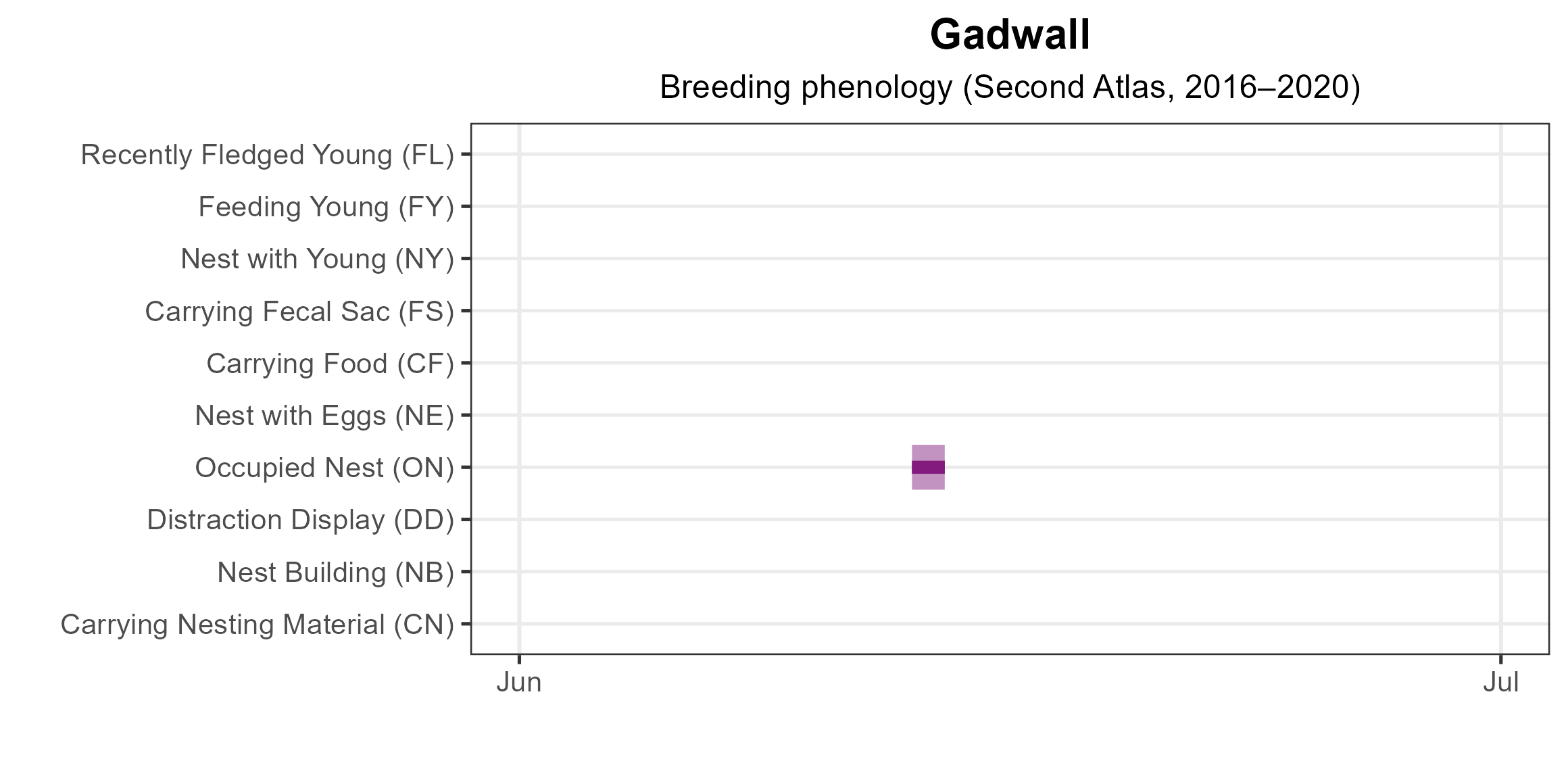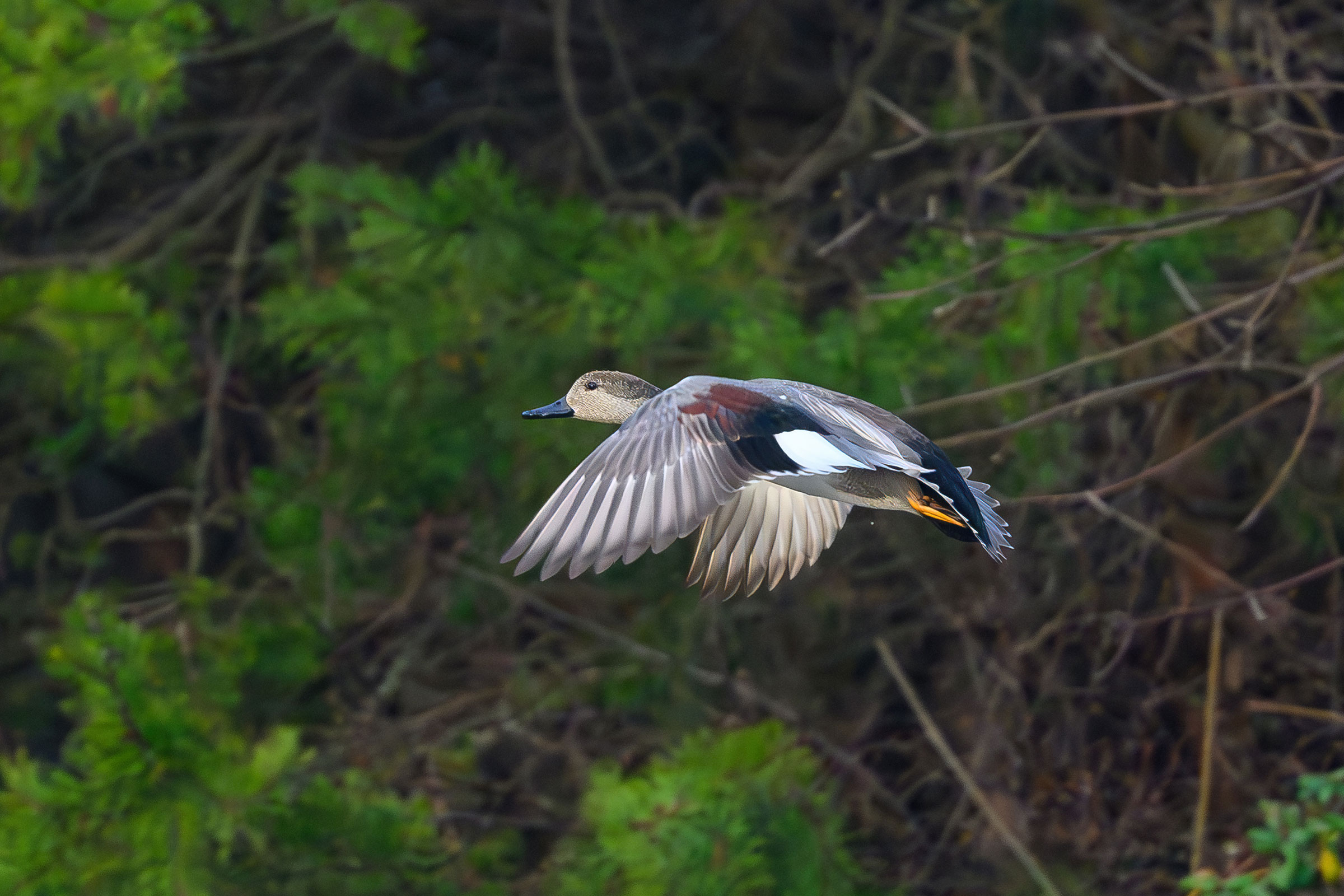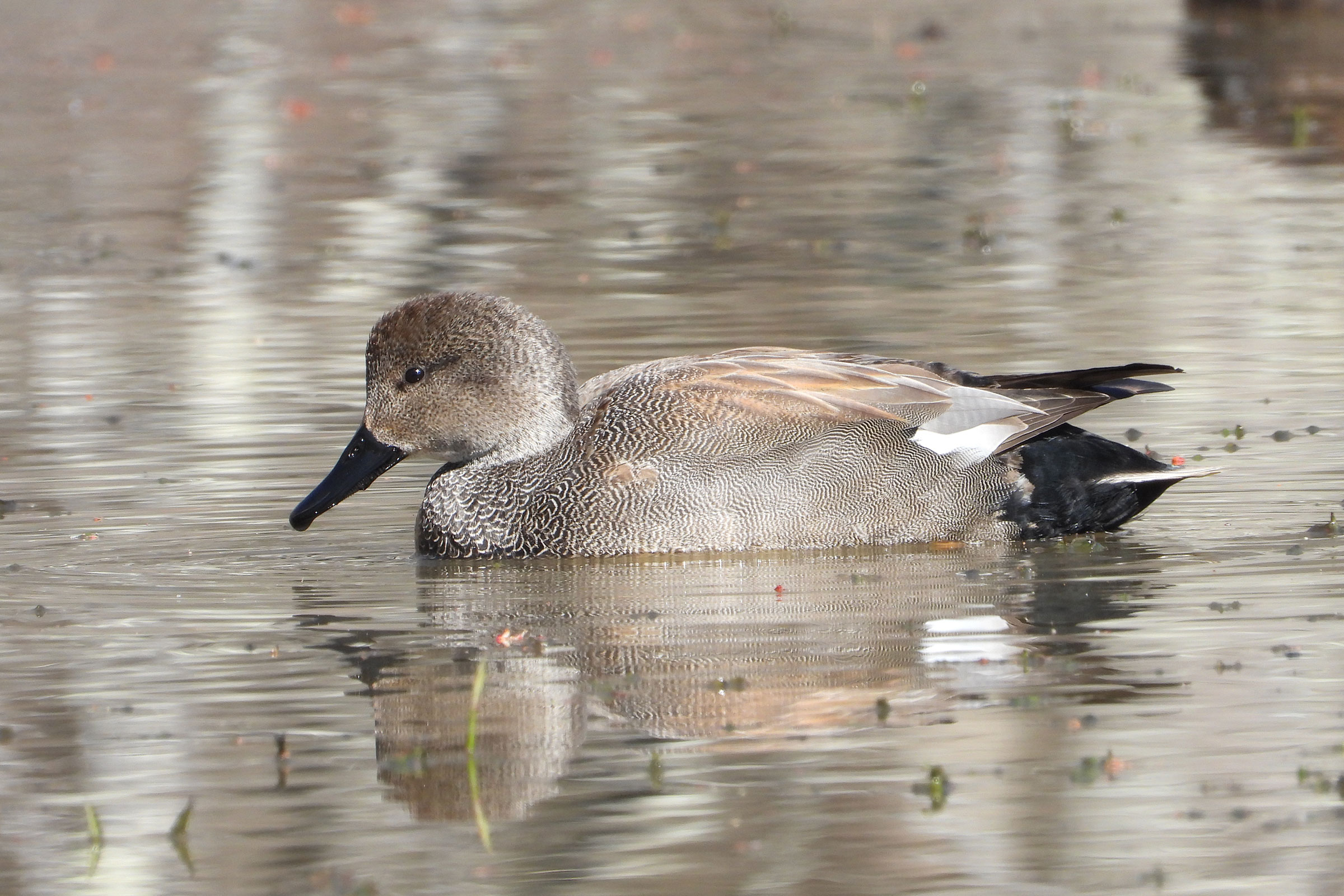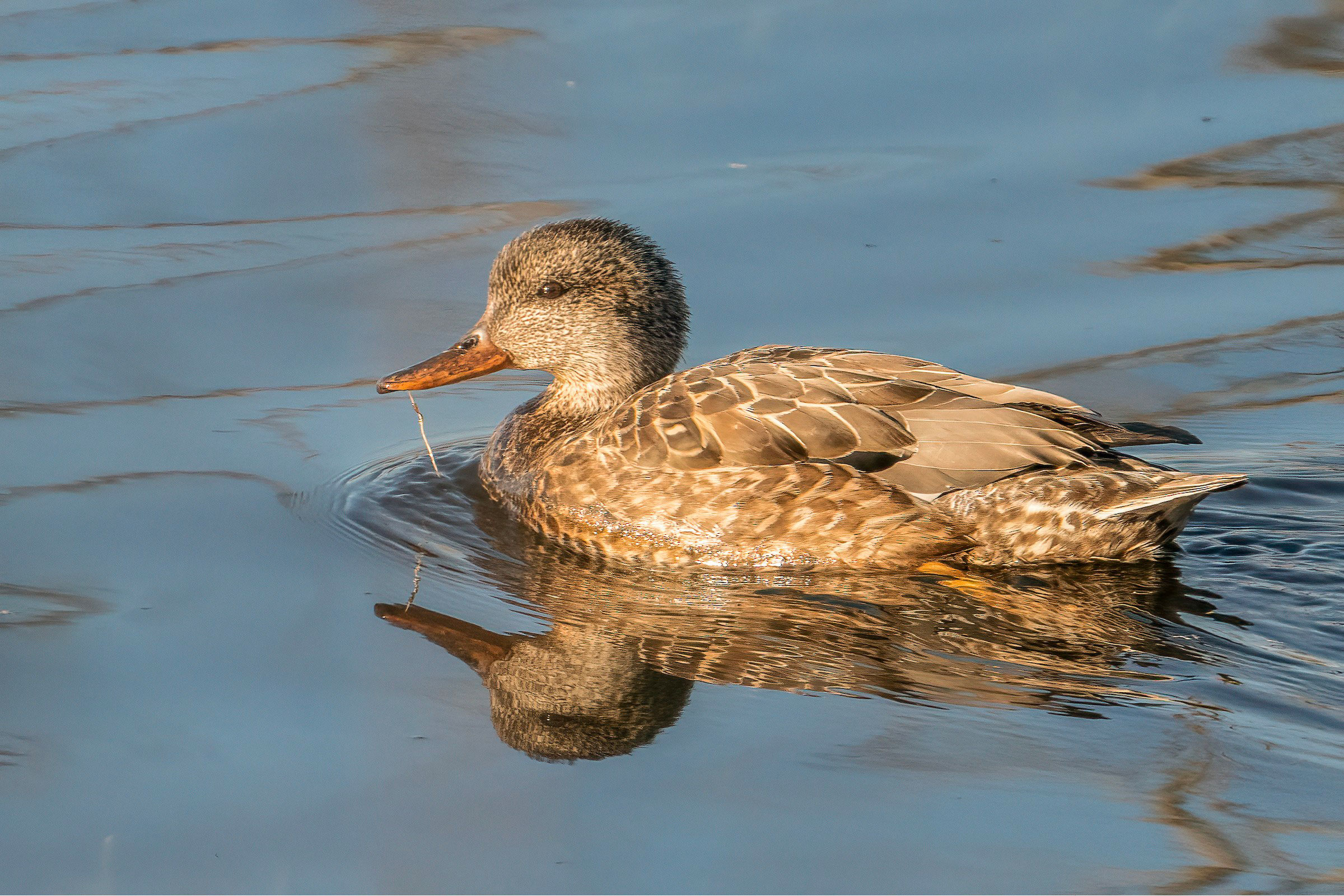Introduction
While Gadwalls are commonly seen migrating through the western half of Virginia, the state is generally not considered to be within the accepted breeding range for the species. However, Gadwalls, though never abundant, were regular nesting birds on some Chesapeake Bay islands in the 1990s and early 2000s, but over the last 20 years, erosion and the loss of some islands have reduced Gadwall breeding numbers (Erwin et al. 2011). Today, Gadwalls do occasionally breed in the state, where they place their nests in dense grass usually within 450 ft (150 m) of open water (Leschack et al. 2020).
Breeding Distribution
During the Second Breeding Bird Atlas, there were too few breeding observations to develop occurrence models for the Gadwall. Please see the Breeding Evidence sections for more information on breeding distribution.
Breeding Evidence
Gadwalls were confirmed breeders in one block on Fishbone Island in Accomack County, and probable breeders were documented at Doe Hammock in Accomack County (Figure 1). Each of these observations was reported by a team of Virginia Department of Wildlife Resources (VDWR) biologists who were conducting American Black Duck (Anas rubripes) surveys (Gary Costanzo, personal communication). On Fishbone Island, the team discovered a nest with 10 eggs (June 13), and at Doe Hammock, two breeding pairs were observed. The only breeding confirmations recorded during the First Atlas also occurred within Accomack County (Figure 2).
For more general information on the breeding habits of this species, please refer to All About Birds.

Figure 1: Gadwall breeding observations from the Second Atlas (2016–2020). The colored boxes illustrate Atlas blocks (approximately 10 mi2 [26 km2] survey units) where the species was detected. The colors show the highest breeding category recorded in a block. The numbers within the colors in the legend correspond to the number of blocks with that breeding evidence category.

Figure 2: Gadwall breeding observations from the First Atlas (1985–1989). The colored boxes illustrate Atlas blocks (approximately 10 mi2 [26 km2] survey units) where the species was detected. The colors show the highest breeding category recorded in a block. The numbers within the colors in the legend correspond to the number of blocks with that breeding evidence category.

Figure 3: Gadwall phenology: confirmed breeding codes. This graph shows a timeline of confirmed breeding behaviors. Tick marks represent individual observations of the behavior.
Population Status
No abundance model was developed for the Gadwall given its rareness in the state. Historically, Gadwalls bred in greater numbers in the state (though not in large numbers), but very few breeders now exist (Gary Costanzo, personal communication).
Conservation
Throughout their range, Gadwall populations are increasing. They are the third most hunted waterfowl species after the Mallard (Anas platyrhynchos) and Green-winged Teal (Anas carolinensis). They have also benefited from hunting-based conservation groups, such as Ducks Unlimited and coordinated conservation partnerships such as the North American Waterfowl Management Plan (Leschack et al. 2020).
Interactive Map
The interactive map contains up to six Atlas layers (probability of occurrence for the First and Second Atlases, change in probability of occurrence between Atlases, breeding evidence for the First and Second Atlases, and abundance for the Second Atlas) that can be viewed one at a time. To view an Atlas map layer, mouse over the layer box in the upper left. County lines and physiographic regional boundaries (Mountains and Valleys, Piedmont, and Coastal Plain) can be turned on and off by checking or unchecking the box below the layer box. Within the map window, users can hover on a block to see its value for each layer and pan and zoom to see roads, towns, and other features of interest that are visible beneath a selected layer.
View Interactive Map in Full Screen
References
Erwin, M. R., D. F. Brinker, B.D. Watts, G.R. Costanzo, and D.M. Morton (2011). Islands at bay: rising seas, eroding islands, and waterbird habitat loss in Chesapeake Bay (USA). Journal of Coastal Conservation 15:51–60.
Leschack, C. R., S. K. McKnight, and G. R. Hepp (2020). Gadwall (Mareca strepera), version 1.0. In Birds of the World (S. M. Billerman, Editor). Cornell Lab of Ornithology, Ithaca, NY, USA. https://doi.org/10.2173/bow.gadwal.01.



